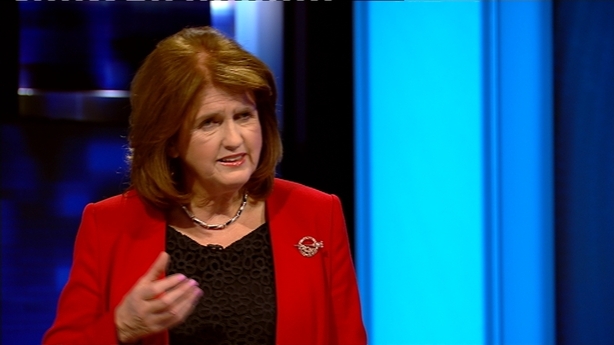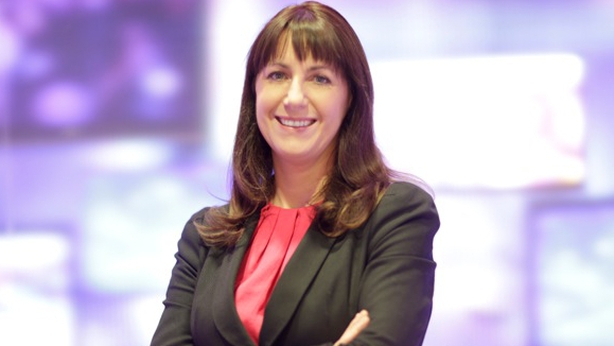Housing and homelessness was one of the key battlegrounds of this election campaign. It has also been an issue which has generated enormous levels of confusion, writes RTÉ Political Correspondent Katie Hannon.
Minister for Transport and Tourism Paschal Donohoe told RTÉ's Prime Time in the first week of this campaign that the Government had built 13,000 social housing units last year and would build 17,000 units next year.
His spokesperson later explained that Mr Donohoe had misspoken and should have said that this number of units had been "delivered".
In the final Leaders’ Debate, Joan Burton was judged to have put in a strong performance, not least because of her spirited defence of the Government’s record on social housing provision.
The Tánaiste said there "was actually over 4,000 social houses given out via local authorities ... 1,000 of those were new builds".

We only have figures available for the first nine months of last year but those show that local authorities had built just 28 new social housing units up to last September. The Voluntary and Co-Operative sector built 218 new units. That would appear to be a long way short of 1,000.
At the end of November 2015, the Department of the Environment had provided approval for the construction of 589 new units by approved housing bodies under this programme. But it will be some time before these will be completed.
So what do they mean by "delivered"?
With such a long lead-in time from planning to approval to completion of new housing projects, what local authorities have been doing in the face of the escalating homelessness crisis is buying houses in the open market for social housing tenants. About 1,000 housing units were purchased for this purpose by local authorities last year.
The total provided to tenants with special housing needs by housing associations under the Capital Assistance Scheme was 350. Local authorities have also entered into long-term leases or rental arrangements under the Social Housing Current Expenditure Programme.
It is estimated that 1,450 units were made available to tenants under this programme last year. Another 2,700 units that had been boarded up were refurbished and offered to tenants by local authorities last year, while 112 units were made available following remedial works.
But by far the largest chunk of the 13,000 social housing units the outgoing Government refers to as having been "delivered" are households who have been accommodated under two housing support schemes.
A total of 5,680 households were supported by the Housing Assistance Payment for the first time in 2015. The department has confirmed that 36% of those households were transferred from rent supplement, while almost all the 1,800 tenancies "delivered" under the Rental Accommodation Scheme were previously rent supplement tenants.
Opposition politicians have accused the Government of massaging the figures by including these households who have simply moved from one housing support scheme to another but the Department of the Environment and the Housing Agency say this is a legitimate way to present these figures.
The bottom line is that a very small number of the thousands of social housing units being promised by all the political parties in this election will be built in the short term with department officials estimating that it currently takes between two to four years to get a development from approval to completion.
Labour and Fine Gael say that it is the fault of the previous Fianna Fáil-led government because the Coalition inherited a situation where all social housing building had ground to a halt.
And it is true that capital spending on housing fell off a cliff during the initial years of the crash. From its peak at over €1.5bn in 2008, by the time the new Government was installed in 2011, capital spending on social housing had dropped by two thirds to €485m.
Investment in housing is not regarded as productive and historically has always been one of the first taps turned off when money is tight. Once the financial crisis hit in 2008, few new social housing projects were approved by the Department and the bulk of what money was spent in ever-decreasing amounts over the following years was required to complete projects that were already under way.
So that by the first years of this Government, social housing building had declined to a trickle with the capital spend on social housing in 2013 at its lowest point of just €295m. The outgoing Government has acted to jump-start construction of social houses now, but it is claimed that its mistake was in not recognising earlier that this would have catastrophic consequences if not tackled immediately.
However, many would argue that a major contributory factor to today’s crisis was a policy decision taken 14 years ago.Then Minister for the Environment Noel Dempsey introduced Part V of the Planning and Development Act in 2000, a powerful piece of legislation that required developers to hand over one social or affordable house for every five completed.
However, two years later, another Fianna Fáil minister, Martin Cullen, amended it to allow developers (who resisted including social housing in their developments) give a cash equivalent to local authorities instead. This money wasn’t always ring-fenced for social housing and the end result was thousands of social houses that should have been built during the boom years never materialised.


